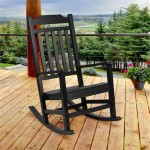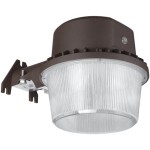Easy Care Outdoor Potted Plants: A Guide to Thriving Greenery
Outdoor potted plants offer a versatile and aesthetically pleasing way to enhance any outdoor space, from balconies and patios to gardens and porches. The appeal lies not only in their beauty but also in their flexibility, allowing for easy rearrangement and adaptation to changing seasons. However, the perceived effort involved in maintaining outdoor plants can often deter potential enthusiasts. Fortunately, a wide variety of plants thrive in containers and require minimal care, making them ideal for beginners or those with busy lifestyles.
The following guide explores several easy-care outdoor potted plants, outlining their specific needs and characteristics to facilitate informed plant selection. It will delve into the crucial aspects of soil selection, watering techniques, sunlight requirements, and fertilization strategies, providing a comprehensive framework for successful potted plant gardening.
Selecting the Right Plants for Your Environment
The success of any outdoor potted plant endeavor hinges on selecting species that are well-suited to the specific environmental conditions of the location. This involves considering factors such as sunlight exposure, temperature fluctuations, rainfall patterns, and wind conditions. Choosing plants that naturally thrive in the existing climate will significantly reduce the effort required for maintenance and increase the likelihood of healthy growth.
Succulents and cacti, for example, are excellent choices for sunny, dry climates. These plants have adapted to store water in their leaves, stems, and roots, enabling them to withstand drought conditions. Conversely, plants like ferns and hostas prefer shady, moist environments, making them better suited for sheltered areas with consistent rainfall or regular watering.
Below are some examples of easy care outdoor potted plants, categorized by their preferred conditions:
For Sunny Locations (6+ hours of direct sunlight daily):
- Sedum (Stonecrop): Highly drought-tolerant with fleshy leaves and vibrant flowers. Requires well-draining soil and minimal watering.
- Lavender: Aromatic and visually appealing with purple flowers. Prefers full sun and well-drained soil. Avoid overwatering.
- Gazania: Produces daisy-like flowers in a variety of colors. Thrives in hot, sunny conditions and tolerates dry soil.
- Portulaca (Moss Rose): Low-growing succulent with vibrant, colorful flowers that open in the sun. Extremely drought-tolerant.
- Geranium (Pelargonium): Classic choice with showy flowers in various colors. Prefers full sun and well-drained soil. Deadheading spent flowers encourages continuous blooming.
For Partially Shaded Locations (3-6 hours of direct sunlight daily):
- Heuchera (Coral Bells): Known for their colorful foliage in shades of green, purple, red, and bronze. Tolerates partial shade and requires well-drained soil.
- Impatiens: Produces abundant, brightly colored flowers in shades of pink, red, white, and orange. Prefers moist soil and partial shade.
- Begonia: Versatile plant with a wide variety of foliage and flower types. Some varieties tolerate full sun, while others prefer shade.
- Coleus: Grown for its vibrant, patterned leaves. Thrives in partial shade and requires regular watering.
- Fuchsia: Unique, drooping flowers in shades of pink, purple, and red. Prefers partial shade and moist soil.
For Shady Locations (Less than 3 hours of direct sunlight daily):
- Hosta: Grown for its attractive foliage in a variety of shapes, sizes, and colors. Prefers moist soil and shady conditions.
- Ferns: Various types of ferns thrive in shady, moist environments. Provide well-draining soil and regular watering.
- Astilbe: Produces feathery plumes of flowers in shades of pink, red, white, and purple. Prefers moist soil and shady conditions.
- Torenia (Wishbone Flower): Delicate flowers in shades of blue, purple, and white. Thrives in shady conditions and requires regular watering.
- Caladium: Known for its colorful, heart-shaped leaves. Prefers warm, humid conditions and shady locations.
Essential Care Practices: Soil, Watering, and Sunlight
Once appropriate plants have been selected, providing the correct care is essential for their continued health and vitality. This involves paying close attention to soil selection, watering techniques, and sunlight exposure.
Soil: The choice of potting mix is crucial for the success of potted plants. Unlike garden soil, potting mix is specifically formulated to provide adequate drainage, aeration, and nutrient retention. A well-draining potting mix prevents waterlogging, which can lead to root rot, a common cause of plant failure. General-purpose potting mixes are suitable for many plants, while specialized mixes are available for specific needs, such as cacti and succulents, which require faster drainage.
Watering: Overwatering and underwatering are two of the most common mistakes in potted plant care. The frequency of watering depends on several factors, including the type of plant, the size of the pot, the weather conditions, and the humidity level. A simple test is to insert a finger into the soil to determine its moisture level. If the top inch or two feels dry, it is time to water. Water thoroughly until excess water drains from the bottom of the pot. Avoid letting the pot sit in standing water, as this can also lead to root rot.
Sunlight: As previously mentioned, understanding the sunlight requirements of each plant is essential. Ensure that plants are placed in locations that provide the appropriate amount of light. Insufficient sunlight can result in stunted growth and a lack of flowering, while excessive sunlight can scorch leaves. Observe plants regularly for signs of stress and adjust their location as needed.
Consider the material of the pot as well. Terracotta pots, for example, are porous and allow for better aeration and drainage, but they also dry out more quickly than plastic pots. Plastic pots retain moisture longer, which can be beneficial in hot, dry climates, but they require careful monitoring to avoid overwatering.
Fertilization and Maintenance for Long-Term Health
While many of the plants listed above are considered low-maintenance, they still require occasional fertilization to replenish nutrients in the soil. Potted plants have limited access to nutrients, as their roots are confined to the container. Regular fertilization provides the necessary nutrients for healthy growth, vibrant foliage, and abundant flowering.
Fertilization: Use a balanced, slow-release fertilizer according to the manufacturer's instructions. Slow-release fertilizers gradually release nutrients over several months, providing a consistent supply to the plants. Alternatively, liquid fertilizers can be applied every few weeks during the growing season. Avoid over-fertilizing, as this can damage the plants.
Deadheading: Removing spent flowers, a process known as deadheading, encourages continuous blooming in many flowering plants. Simply pinch or cut off the faded flowers just below the flower head. This prevents the plant from expending energy on seed production and redirects it towards producing more flowers.
Pruning: Regular pruning helps to maintain the shape and size of plants, as well as to remove any dead or diseased branches. Pruning also encourages bushier growth and improved air circulation, which can help to prevent fungal diseases. Use clean, sharp pruning shears to make clean cuts.
Pest and Disease Control: Monitor plants regularly for signs of pests or diseases. Common pests include aphids, spider mites, and whiteflies. Treat infestations promptly with insecticidal soap or neem oil. Prevent fungal diseases by ensuring good air circulation and avoiding overwatering. Remove and dispose of any infected plant material to prevent the spread of disease.
Repotting: As plants grow, they may eventually outgrow their pots. Repotting is necessary to provide them with more space for their roots to expand. Choose a pot that is slightly larger than the current pot and use fresh potting mix. Repot plants in the spring or fall, when they are not actively growing. Gently remove the plant from its old pot, loosen the roots, and place it in the new pot. Fill the pot with fresh potting mix and water thoroughly.
Winter Protection: In colder climates, some potted plants may need to be protected from freezing temperatures. This can be achieved by moving them indoors, wrapping them in burlap, or covering them with blankets. Alternatively, consider selecting plants that are hardy enough to withstand the winter conditions in your area.
By following these guidelines and selecting the right plants for the specific environment, anyone can successfully cultivate beautiful and easy-care outdoor potted plants. The result is a thriving outdoor space that provides enjoyment and enhances the aesthetic appeal of the surroundings.

31 Best Low Maintenance Plants For Outdoor Pots And How To Take Care Of Them Growing Family

Easy Plants To Grow In Pots Hgtv

Easy Plants To Grow In Pots Hgtv

These Stunning Container Plants Can Take The Heat

Top 10 Plants For Pots And Containers Bbc Gardeners World Magazine

10 Plants For Year Round Containers Finegardening

Easy Plants To Grow In Pots Hgtv

Easy Care Herbs Make An Instant Container Garden The Denver Post
:strip_icc()/102004263-41bff9fff7d04880bbac446ad66ab8e2.jpg?strip=all)
Best Tropical Flowers For Your Patio

Everything You Need To Know About Container Gardening








